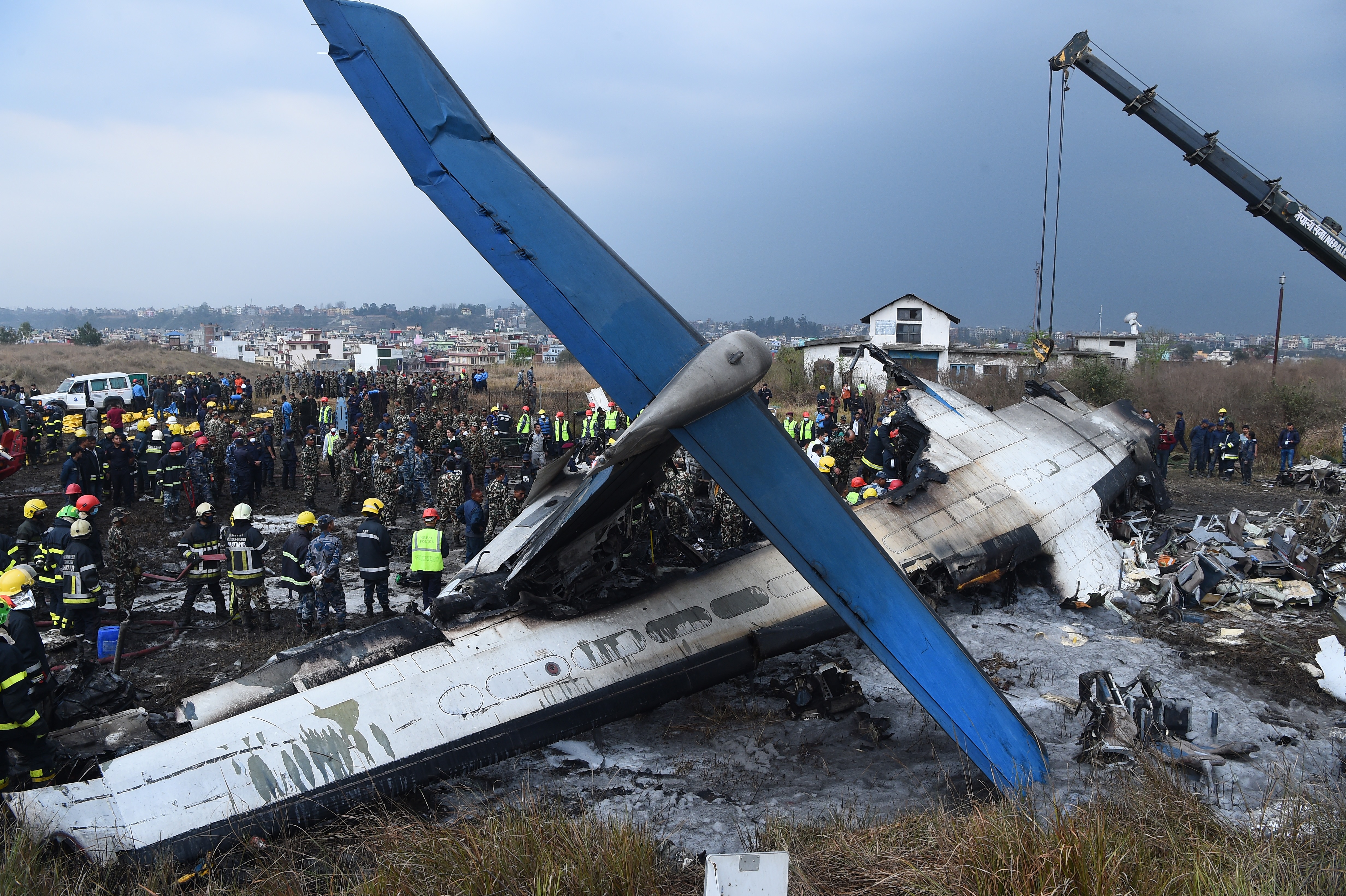Pilot’s ’emotional breakdown’ blamed for deadly Nepal plane crash
51 people were killed when the flight from Dhaka crashed at Kathmandu airport in March 2018 (PRAKASH MATHEMA)
Kathmandu (AFP) – An “emotional breakdown” by the pilot caused a deadly plane crash in Nepal last March, a government investigation concluded, in the worst aviation accident in the Himalayan nation for decades.
The March 12 flight from the Bangladeshi capital Dhaka crash-landed at Kathmandu airport and skidded into a football field where it burst into flames, killing 51 people onboard.
Twenty passengers miraculously escaped the burning wreckage.
“The probable cause of the accident is due to disorientation and a complete loss of situational awareness in the part of crew member,” the report said.
The investigation concluded that there was clear evidence the pilot in command, Captain Abid Sultan, was harbouring “severe mental stress” and was upset after a female co-worker had questioned his reputation as a good instructor.
According to the report, Sultan — a former Bangladesh Air Force pilot who was also an instructor for the airline — talked non-stop and smoked throughout the short flight from Dhaka to Kathmandu, as he tried to impress upon the junior co-pilot his competence and proficiency.
“One of the reasons could be him trying to prove… he is a very competent pilot and would be able to safely land the aircraft in any adverse situation,” the report said.
The co-pilot, Prithula Rashid, had only recently qualified and had never previously landed at Kathmandu airport, which lies in a narrow bowl-shaped valley, making it a notoriously challenging place to land.
As the Bombardier DHC-8-402 turboprop approached the runway it made a last-minute change of direction, failed to reduce its speed and did not carry out the necessary landing checks, investigators said.
“The accident could have been avoided. The pilot thought he would be able to land it, but couldn’t,” Buddhisagar Lamichhane, a government official part of the investigation committee, told AFP.
The report said the pilot had been released from the Bangladesh Air Force in 1993 due to depression and declared fit to fly in 2002 after a detailed medical evaluation.
It also cited a lack of assertiveness from controllers at Kathmandu airport in monitoring the flight path and failing to issue clear instructions.
The accident was Nepal’s deadliest since September 1992, when all 167 people aboard a Pakistan International Airlines plane were killed when it crashed as it approached Kathmandu airport.
Just two months earlier a Thai Airways aircraft had crashed near the same airport, killing 113 people.
Nepal’s poor air safety record is largely blamed on inadequate maintenance and sub-standard management.
Accidents are common and Nepal-based airlines are banned from flying in European Union airspace.
Disclaimer: This story is published from a syndicated feed. Siliconeer does not assume any liability for the above story. Validity of the above story is for 7 Days from original date of publishing. Content copyright AFP.


